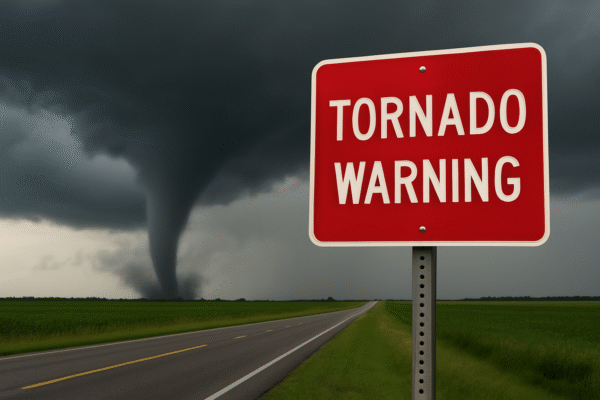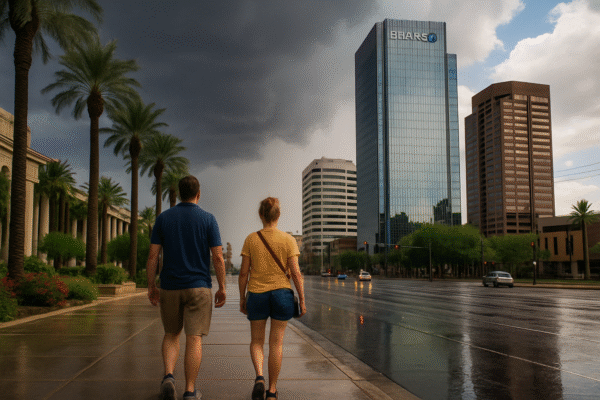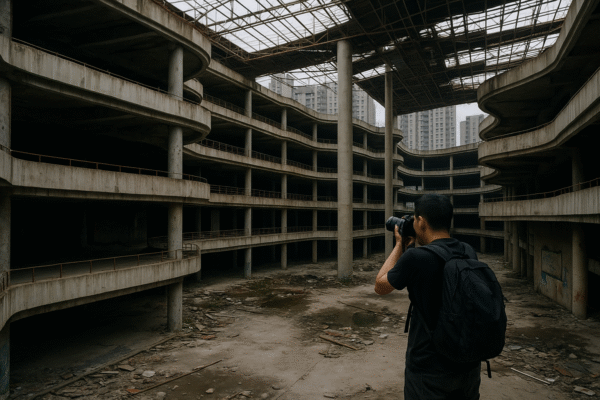In cities across China, crumbling shopping malls, deserted apartment complexes, and half-finished skyscrapers are becoming unlikely travel destinations for a growing community of urban explorers. With cameras in hand and curiosity as their guide, these adventurers are documenting the haunting remains of China’s once-booming real estate empire—one now paralyzed by economic turbulence.
Among the most well-known is 29-year-old tech worker Xu Pengcheng from Qingdao. What started as a side hobby has evolved into a widespread online movement. Xu and his team now boast thousands of followers on platforms like Xiaohongshu and Weibo, sharing striking imagery from long-abandoned schools, theaters, and ghost towns scattered across cities like Chengdu and Shanghai.
“Images are very fresh, very fascinating,” Xu told local media. “They’re not just photographs. They’re historical fragments of China’s urban evolution.”
Rise of Urban Exploration in China
Urban exploration, or “urbex,” has long flourished in Western cities like Detroit, Berlin, and London. But in recent years, it has taken root in China, driven by a slowing real estate market and the visibility of decaying infrastructure across the country. These forgotten places—often remnants of failed developments or outdated infrastructure—offer a visual history of an economy that once promised never-ending growth.
Many of the sites documented by explorers are located in China’s infamous “ghost cities.” These include vast zones of uninhabited high-rise apartments, incomplete malls, and overgrown construction zones. According to the China Real Estate Information Corporation (CRIC), there are more than 50 such underpopulated areas across China, a testament to speculative overbuilding during the 2010s property boom.
One prominent location for urban explorers is the Pentagon Mall in Pudong, Shanghai. Construction began in 2009, but the project was abandoned midway due to a lack of investor confidence. Today, the mall’s exposed beams, shattered tiles, and graffiti-covered walls offer a dystopian glimpse into the failures of modern urban planning.
Shanghai-based urban explorer Sean says these structures speak volumes. “It’s not just about decay—it’s about understanding how fast we moved, and what we left behind,” he says. “For some, it’s about thrill-seeking. For others, it’s a form of time travel.”
Ghost Cities and a Collapsing Real Estate Dream
China’s property crisis, worsened by debt defaults from major developers like Evergrande and Country Garden, has led to a nationwide construction freeze. Government data shows that in 2024 alone, over 25% of real estate projects in Tier 2 and Tier 3 cities were either delayed or permanently abandoned. These figures have created a landscape ripe for urbex photography and storytelling.
In Chengdu, entire blocks of residential towers stand empty. In parts of Hebei province, local governments have attempted to repurpose failed developments into government offices, public housing, or even vertical farms—but many structures remain in limbo.
For urban explorers, these sites aren’t just about architecture—they are cautionary tales. “They represent a moment of economic overreach,” says Xu. “But they also show us how quickly things can fall apart.”
Legal and Physical Dangers
Urban exploration is not without risk. Many abandoned sites are structurally unsound, with crumbling staircases, broken glass, exposed wiring, and vermin infestations. In several cases, explorers have been injured while climbing through hazardous structures, leading local governments to issue warnings.
Additionally, Chinese law makes it illegal to enter most abandoned properties without permission. Trespassing can result in fines or arrest, particularly in sensitive areas near government infrastructure or military zones.
Despite the risks, the community continues to grow. “We’re not here to vandalize or steal,” says Xu. “Our motto is: take nothing, leave nothing. We’re just here to document what the world forgot.”
A Digital Community Preserving the Past
Urban explorers in China are also building a tight-knit digital community. Popular WeChat groups and forums allow members to share coordinates, safety tips, and even underground maps of China’s abandoned spaces. Explorers often leave cryptic notes or QR codes on-site to guide others, forming a decentralized knowledge base for future adventurers.
Some tourism observers have likened this growing movement to a new form of heritage preservation. Unlike traditional museums or curated exhibits, urban exploration presents history raw and unfiltered—captured through the lens of a camera before bulldozers sweep the site away.
The Future of Urbex in China
With China’s real estate market unlikely to recover soon, the number of abandoned developments is expected to rise. While local governments debate how to repurpose these failed assets, urban explorers are already making use of them—preserving memories that might otherwise be lost to concrete dust.
As Xu and his peers continue to explore the decaying edges of China’s rapid modernization, their work offers a haunting mirror to a nation in flux. They are not just tourists in ghost towns. They are archivists of a forgotten era, documenting the spaces between ambition and abandonment.
In an age where much of urban China is being rewritten, one forgotten building at a time, these explorers are ensuring that what once stood tall is not erased without a trace.
For more travel news like this, keep reading Global Travel Wire



















